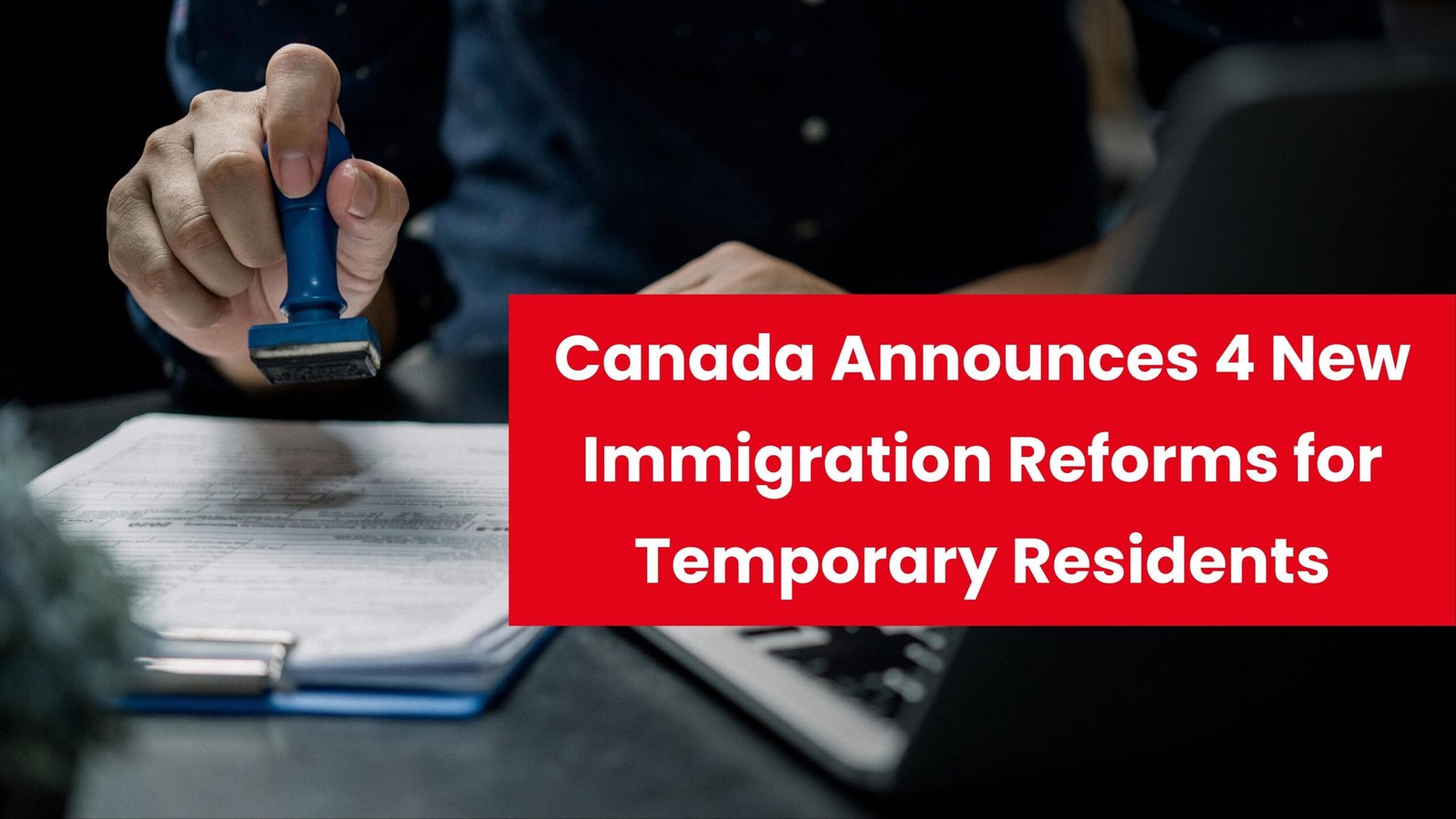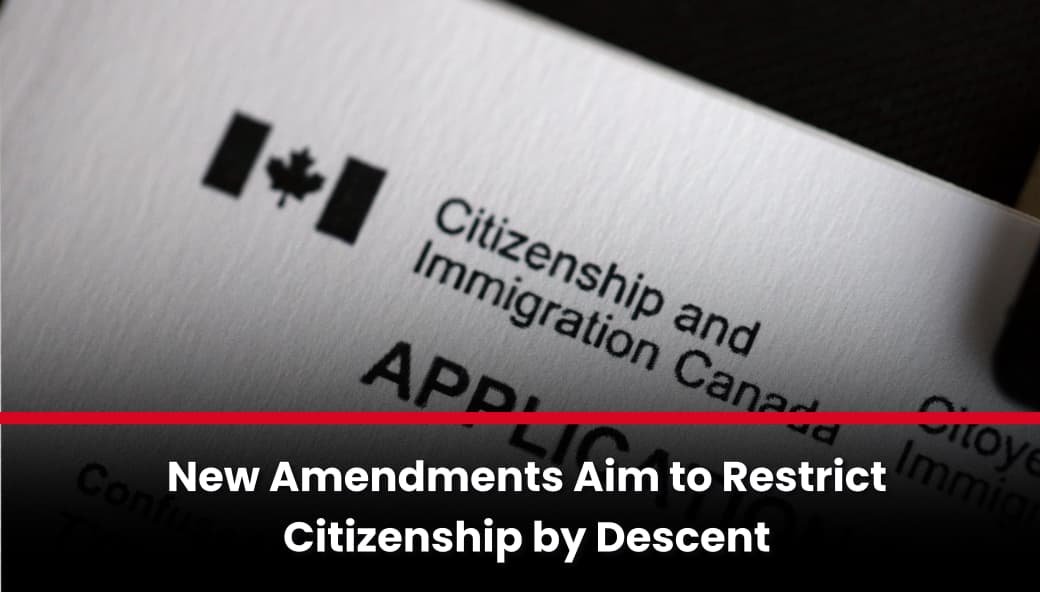On June 17, 2025, the Canadian government provided further details and clarification on the proposed immigration reforms outlined in the Strong Borders Act, which was initially introduced earlier this month.
The Strong Borders Act, proposed at the beginning of June 2025, aims to address concerns around temporary residents misusing the immigration system and improve the efficiency of asylum procedures.
If passed, the Act would grant authorities the power to cancel, suspend, or alter immigration documents. It would also introduce new rules for asylum claim ineligibility, especially for temporary residents.
Book Your Consultation for Canadian Immigration
This article breaks down the additional details provided by the Canadian government about the Strong Borders Act, its key provisions, and their potential impact.
What Is the Proposed Legislation?
Canada’s immigration system is vital for its economic growth and cultural diversity. However, issues like irregular crossings, asylum backlogs, and fraud have caused strain on the system and public trust.
Introduced on June 3, 2025, by Minister of Public Safety Gary Anandasangaree, the Strong Borders Act seeks to address these challenges.
On June 17, 2025, additional clarifications outlined four key pillars of the bill:
- Control Over Immigration Documents: Greater authority to manage visas and permits.
- Domestic Information Sharing: Improved exchange of data between domestic agencies.
- Asylum Claim Processing: More efficient and fair handling of claims.
- Asylum System Integrity: New rules to prevent misuse of the asylum system.
While the bill still requires parliamentary approval, if enacted, the reforms—effective from June 3, 2025—aim to restore public confidence in the immigration system while upholding Canada’s humanitarian commitments.
Controlling Immigration Documents
Under the proposed Act, the government would gain the power to cancel, suspend, or modify immigration documents (e.g., visas, electronic travel authorizations, work permits) in the public interest. It could also pause new applications—though these powers wouldn’t apply to asylum claims.
What Constitutes “Public Interest”?
The Act defines “public interest” broadly, allowing it to address various situations such as:
- Large-Scale Emergencies: Responses to natural disasters or geopolitical crises.
- Immigration or Program Misuse: Addressing fraudulent applications or misuse of pathways.
- Health, Security, and Safety Risks: Such as dealing with health crises or security threats.
- Misuse of Government Programs: Preventing fraud in services like social benefits or settlement programs.
How It Would Work:
These powers would be exercised by the Governor in Council, acting on advice from the Cabinet. Factors like the impact on vulnerable populations (e.g., minors or refugees) would be considered before making decisions. Importantly, changes to immigration documents won’t automatically revoke an individual’s resident status.
Potential Impacts:
- For Immigrants and Temporary Residents: Scrutiny of immigration documents may help identify fraudulent applications more quickly but could create uncertainty for those with pending applications.
- For Canadians: Stricter document controls could enhance public confidence by ensuring only eligible individuals access services.
- For Policymakers: Greater flexibility in response to challenges (like a surge in applications or security concerns) would help maintain a resilient immigration system.
Streamlining Domestic Information Sharing
The Act proposes changes to streamline how Immigration, Refugees, and Citizenship Canada (IRCC) shares information with other government agencies at the federal, provincial, and territorial levels.
These changes aim to reduce administrative burdens, improve service delivery, and close gaps in information-sharing.
Key Features:
- Direct Data Sharing: IRCC can share client information directly with authorized partners without repeating assessments.
- Privacy Protections: Disclosures will adhere to Canada’s privacy laws and require formal agreements to ensure proper data use.
- Restrictions on Foreign Sharing: Provinces and territories can’t share IRCC data with foreign entities without explicit authorization from IRCC.
Privacy Considerations:
The government emphasizes privacy protections throughout this process. Information-sharing agreements will set clear limits on how data is used, ensuring public trust.
Potential Impacts:
- For Immigrants: Faster service access but potential concerns about data security.
- For Canadians: Reduced fraud and better use of public resources.
- For Governments: Enhanced collaboration between federal and provincial authorities, improving efficiency in immigration-related issues.
Streamlining Asylum Claim Processing
The Strong Borders Act proposes major changes to how Canada processes asylum claims. These reforms aim to speed up the process, make it more equitable, and ease navigation, all while preserving Canada’s commitment to protecting those in need.
Key Reforms:
- Simplified Application Process: Standardization of the asylum application process, whether claims are made at a port of entry or inland IRCC office. An improved online system will make submissions easier.
- Faster Referrals: Complete asylum claims will be referred to the Immigration and Refugee Board of Canada (IRB) more quickly, reducing decision-making wait times.
- Physical Presence Requirement: Only asylum seekers physically present in Canada will be eligible for IRB decisions, ensuring accountability.
- Clearing Inactive Cases: Mechanisms will be introduced to remove inactive or abandoned claims, reducing the backlog.
- Faster Voluntary Departures: Individuals who withdraw their claims will have their removal orders enacted immediately.
- Support for Vulnerable Claimants: Minors and vulnerable claimants will be provided with representatives during the process.
Given that Canada’s asylum system has been under strain due to backlogs, these changes aim to provide faster and fairer processing for those in need.
Potential Impacts:
- For Asylum Seekers: Faster processing will reduce uncertainty and expedite protection for genuine refugees, but quicker removals may apply to those with inactive claims.
- For Canadians: A more efficient system will reduce costs, backlogs, and reinforce trust in the system’s fairness.
- For the IRB: Streamlined referrals will allow the IRB to focus on active claims, improving system performance.
New Asylum Claims Ineligibility Rules
To prevent misuse of the asylum system, the Strong Borders Act introduces two new ineligibility provisions for asylum claims:
- One-Year Rule: Asylum claims filed more than one year after arrival in Canada (after June 24, 2020) will not be referred to the IRB. This applies to all individuals, including students and temporary residents.
- 14-Day Rule for Irregular Entries: Claims made by individuals who enter Canada irregularly (e.g., crossing between ports of entry) and file a claim after 14 days will not be referred to the IRB.
These new rules will apply to all claims made on or after June 3, 2025, once the Act is passed.
Clarifications:
- Not a Ban on Asylum: These rules don’t prevent claims, but restrict some claims from being referred to the IRB.
- Pre-Removal Risk Assessment (PRRA): Affected individuals can still apply for a PRRA to assess risks like persecution or torture if returned to their home country.
Potential Impacts:
- For Asylum Seekers: These rules may deter opportunistic claims, but they could also limit access for those unaware of the deadlines.
- For Canadians: Reducing misuse will ease pressure on the IRB and allow it to focus on legitimate claims.
- For Border Security: The 14-day rule could help manage irregular crossings, particularly from the US.
Looking Ahead: What’s Next for Canada’s Immigration System?
The Strong Borders Act marks a major step in modernizing Canada’s immigration and asylum systems. However, this is just the beginning.
The government plans to closely monitor the legislation’s impact and make adjustments as necessary.
Key Areas to Watch:
- Implementation Timeline: The new ineligibilities will take effect on June 3, 2025, allowing time for the IRCC and IRB to prepare.
- Stakeholder Engagement: Collaboration with provinces, territories, and advocacy groups will shape how the law is implemented.
- Global Implications: As other nations observe Canada’s reforms, the Strong Borders Act could influence global immigration and asylum practices.
If passed, the Strong Borders Act will strengthen Canada’s immigration system by improving document control, streamlining information sharing, accelerating asylum processing, and enhancing system integrity—all while preserving Canada’s humanitarian values. As the bill progresses, clear communication and public engagement will be crucial for its success.
By staying informed, both Canadians and newcomers can contribute to a fairer and more efficient immigration system, thereby preserving Canada’s values of opportunity and compassion. As of this update, the AAIP is processing 116 applications submitted on or before April 10, 2025.





